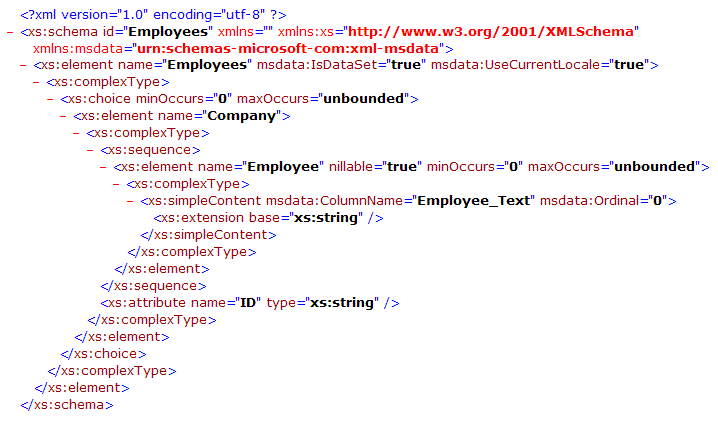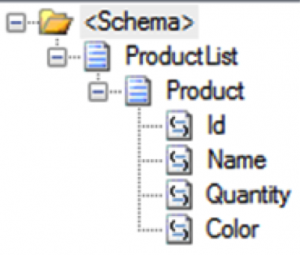

Get the XSD file and add it to a subfolder - GPX.xsd (opens new window) - in this case Gpx.Set up a bare bones DotNetCore console project (if you use Visual Studio the IDE will do some clever XSD to class associations for you).
#XML XSD.EXE WINDOWS#
Luckily Microsoft provide a little known tool to automate the process, buried away in the Windows SDK - XSD.exe.

#XML XSD.EXE CODE#
One look at the definition will tell you how complex and detailed the GPX standard is, and how much effort would be required to code and test the classes manually. The detailed XSD definition is here (opens new window). These are XML formatted files with a gpx extension. To demonstrate the process we're going to import GPX files. There's a Github Repository here (opens new window) to accompany this article.
#XML XSD.EXE HOW TO#
Almost nobody covers how to do it quickly in scenarios where you have a XSD XML definition file. You can put this first class (extracted from the schema evtInfoContribuinte-v1_04_00.There are plenty of articles on the web showing you how to serialize/Deserialize XML - some good, but most just re-gurgitation of the same content. Tip: Put each schema converted to a specific namespace because they all have the root element with the same name, Reinf, and when you add the class of the second schema will already conflict if they are not in separate namespaces.
#XML XSD.EXE DOWNLOAD#
You could download the file xmldsig-core-schema.xsd (you can get it by, for example, downloading the eSocial Communication Package v1.5, in the \XSD\Eventos\RetornoEvento folder) and run the command this way: xsd.exe /classes evtInfoContribuinte-v1_04_00.xsd xmldsig-core-schema.xsd Will not the generated classes be incomplete? Since it is the XSD file made available by the IRS. My question: Would this be the correct procedure (remove)? I understand that in XSD it is giving error here: Microsoft (R) Xml Schemas/DataTypes support utility If you would like more help, please type "xsd /?".Ĭ:\Reinf\XSD>xsd evtInfoContribuinte-v1_04_00.xsd /classes Class generation may fail or may produceĮrror: Error generating classes for schema 'evtInfoContribuinte-v1_04_00'. All rights reserved.Įment is not declared. XSD.exe returns error: Microsoft (R) Xml Schemas/DataTypes support utilityĬopyright (C) Microsoft Corporation. I'm trying to generate XSD.exe classes in C # from the Reinf XSD files:Īs follows: C:\Reinf\XSD>xsd evtInfoContribuinte-v1_04_00.xsd /classes


 0 kommentar(er)
0 kommentar(er)
